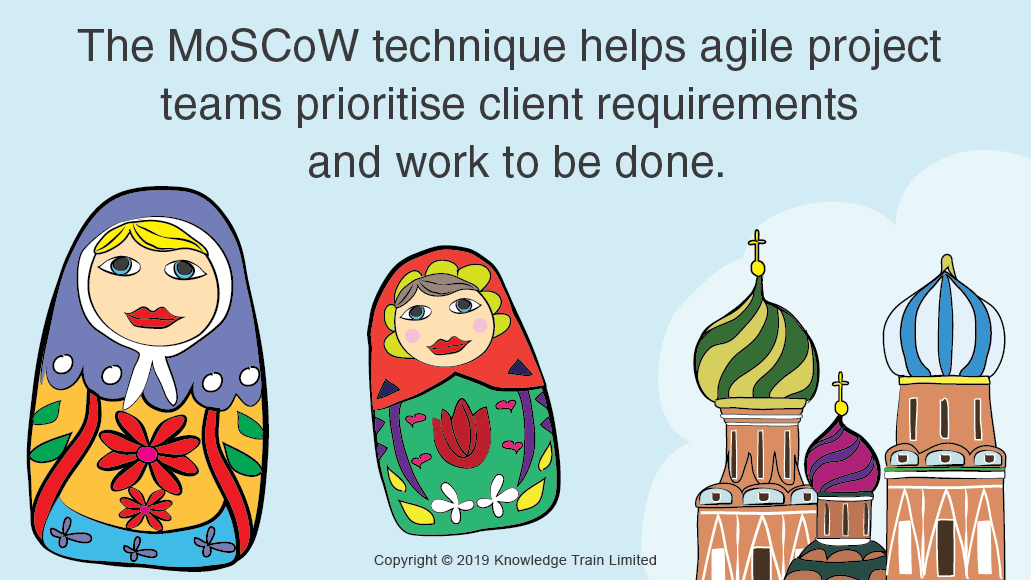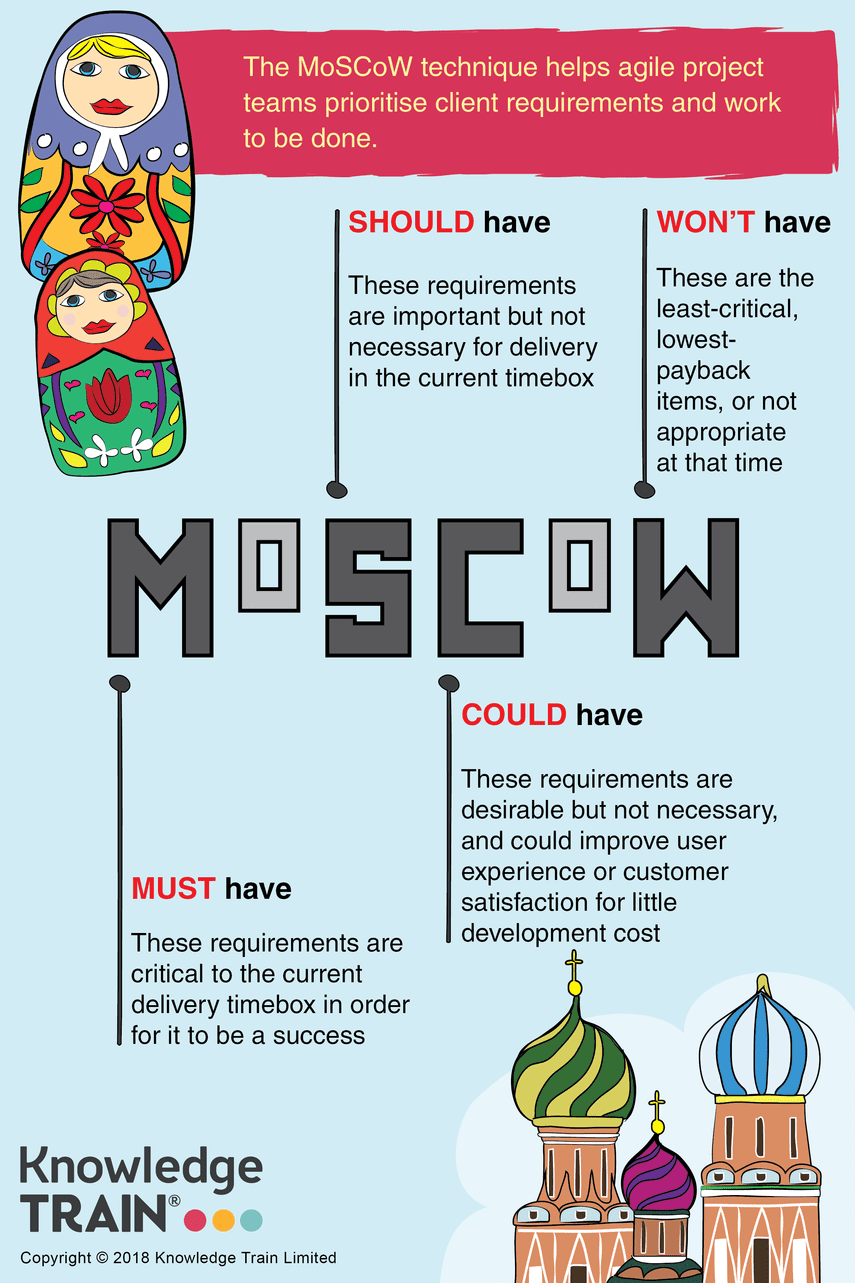How to use MoSCoW

The MoSCoW prioritisation technique is used on agile projects to help prioritise tasks. It’s an incredibly useful method that non-agile projects can benefit from too. It's taught as a core component on an agile project management course.
Read this article to learn more about MoSCoW and how to use it.

What is MoSCoW?
MoSCoW is a prioritisation technique commonly used by agile project teams. It stands for
Must
Should
Could
Won't
and helps teams understand which requirements or tasks they should focus on. MoSCoW was invented by Oracle employee Dai Clegg in 1994 and is the most common prioritisation technique used on agile projects.
Though MoSCoW is often used to prioritise customer’s requirements on projects, it can also be used outside of projects. For example, to prioritise business as usual work within an organisations or to prioritise jobs to do at home in your personal life.
If you’re learning about agile project management, MoSCoW is one of the many key agile techniques which you need to understand. It’s one of the techniques covered on the popular AgilePM courses.
Why should I use it?
Using MoSCoW is a highly effective way for a project team to prioritise its work. Focussing on the most important tasks means they can get the main components of the project finished quickly, before the fancy bits are added later. It keeps the entire team on the same page, ensuring everyone knows what is being worked on.
Using MoSCoW also means both customer and project team might decide that some requirements don’t even need to be there. It helps cut out unnecessary things and keeps things lean, agile and simple. MoSCoW is one of the aspects of agile that helps the team minimise wasted time, effort, resources and money.
How to use it
MoSCoW is simple to use. Firstly, you’ll need a list of the customer’s requirements. A great way to use MoSCoW is in a workshop with users. Brainstorm a list of requirements, writing each one on a post-it note and then apply MoSCoW.
It is also commonly used during Scrum planning meetings to prioritise user stories for the next sprint.
So, with your list of requirements, ask whether each requirement is one of the following:
Must
A requirement which must be completed and is vital for the project’s success. Without this requirement, the project will likely fail.
Should
Whilst these requirements are important, they can be delayed if time, resources or money are tight. They are not as time-critical as musts.
Could
These requirements are not necessary, but they can be completed if there’s enough time.
Won’t
These requirements are the least critical and can be completed at a later stage.
Let’s use an example. Your customer wants a new e-commerce website for their small clothing business. Their requirements for this project are:
- It needs a homepage
- It needs product pages
- Each product needs a photo and description
- There needs to be a shopping cart
- There needs to be an about us page
- There needs to a be a terms & conditions, returns page
- There should be a banner with special deals
- There should be live chat
- It would be nice to have social media buttons
- It would be nice to have a pop up for subscribing to mailing lists
- Perhaps there can be a blog, but not sure
Using MoSCoW, you might want to prioritise these requirements like this:
Must
Homepage, product listings, product photos and descriptions, shopping cart, about us page, returns page, terms & conditions page.
Should
Banner and live chat
Could
Social media
Won’t
Blog
Once prioritised, your team will know which requirements to work on first. To help keep everyone on the same page, it’s highly recommended you use a Kanban board. This can be a physical board in the office, or you can investigate digital boards, such as KanbanFlow and Trello.
Summary
Overall, the MoSCoW technique is an excellent tool for any agile project team. It brings focus and simplicity to everyday work, cuts down on wasted time and effort, and keeps everyone working towards the same goals. It can even be used outside projects on business as usual activities.
If you’re interested in learning the agile approach to project management, check out our AgilePM classroom courses and AgilePM online courses.
